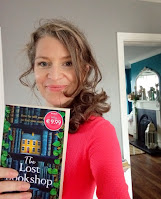நா. முத்துக்குமாரின் ஆறு கவிதை தொகுப்புகளை உள்ளடக்கியது இந்நூல். கவிதைகளில் இடம்பெரும் துள்ளிய வர்ணனையும், அசரவைக்கும் கற்பனையும் தமிழ் திரையுலகில் முத்துக்குமாரின் நிரப்பப்படா இடத்தை நினைவூட்டுகிறது. அவரது எழுத்துக்கள் இயல்பானவை, தனது புலமையைக் காட்டி வாசகனை என்றுமே திக்குமுக்காட செய்ததில்லை.
தினம்தினம் நாம் சந்திக்கும் மனிதர்களையும், நம்மை சுற்றி நடக்கும் சாதாரண நிகழ்வுகளையும், நமது உணர்வுகளையும் நமக்கு நெருக்கமான மொழியில் இக்கவிதைகளில் தருகிறார்.
கவிஞர் தனது பால்யத்தை விவரிக்கும் கவிதைகளில் அம்மா, அப்பா மற்ற உறவுகளுடன் பள்ளி அனுபவங்கள், நண்பர்களின் நினைவுகள் என அடுக்கும் போது, அவை நம்முடைய பால்யத்தை நினைவூட்டும் ஒரு nostalgic experience ஆக அமைகிறது.
அவர் கடவுளை விடவும் இயற்கையை அதிகமாக விரும்பியதை பல இடங்களில் காண முடிகிறது. பகுத்தறிவு கருத்துக்களுடன் பெண் விடுதலை, பாலின சமத்துவம் பேசும் கவிதைகள் இந்த தொகுப்பு முழுக்க நிரம்பி இருக்கின்றன. சமகால சமூக சூழலை பிரதிபலிக்கும் கவிதைகள் கவிஞரின் தெளிவான அரசியல் நிலைப்பாட்டையும் பதிவு செய்கின்றன.
"தூர்" எனும் கவிஞரின் பிரசித்தி பெற்ற கவிதையைத் தவிர்த்து என்னை கவர்ந்த சில கவிதைகள்...
அம்மாவின் கரிச் சுவர்
ஒவ்வொறு பொங்கலுக்கும்
வெள்ளையடித்தாலும்
மீண்டும் தன் முகத்தில்
கரி பூசிக்கொள்கிறது
சமையலறைச் சுவர்.
...
அம்மாவுக்காய் அழுகிற
ஈர விறகுகளின்
புகைச் சோகம் தாங்கி
மேலும் கறுக்கும் அது.
...
அக்காவுக்கு இவற்றிலிருந்து
சீக்கிரம் விடுதலை.
கல்யாணம் ஆனதும்
கேஸ் குக்கர்
சுவரில் டிஸ்டெம்பர்
சுவர் விடுதலை மட்டும்
பெண் விடுதலை என்றால்
அம்மாக்களை விட
அக்காக்கள் அதனை
அடைந்து விட்டார்கள்.
இட்லி புத்திரர்கள்
இட்லிகள் கொள்கையற்றவை
சாம்பாரில் மிதவையாகவும்
சட்னியில் துவையலாகவும்
ஏதுமற்ற பொழுதுகளில்
எண்ணெய் மிதக்கிற
மிளகாய்த்தூளில் துணுக்கெனவும்
எதனுடனும் அமையும்
இட்லிகளின் கூட்டணி
பெயர் உருவான கதை
ஆரம்பத்தில் அதன் பெயர்
வேறாக இருந்தது.
அதன் பலகீனம்
இருபுறம் சுவர் சூழ்ந்த
குறுபாதை எனலாம்.
...
ஆத்திரம் மட்டுமே
அடக்கக் கற்ற
மனிதர்கள் கூடி
அதற்கொரு பெயர்
அப்புறம் வைத்தனர்
மூத்திரச் சந்து.
சலூன் கண்ணாடிகள்
பிமபங்களற்ற தனிமையில்
ஒன்றிலொன்று முகம் பார்த்தன
சலூன் கண்ணாடிகள்.
நியூட்டனின் மூன்றாம் விதி
மேல் வீட்டுக்காரன்
என்கிற உரிமையில்
நீ கைப்பற்றும் சுதந்திரம்
அதிகப்படியானது.
உன் ஒவ்வொரு அசைவும்
பூதாகரமாய் ஒலிக்கிறது
கீழ்த்தளச் சுவர்களில்.
...
உன்னைப் பழிவாங்கும் விதமாக
என்னால் முடிந்தது ஒன்றுதான்.
எனதருமை மேல்தளத்து நண்பா...
தலையணையையும் மீறி
உன்காதுகளில்
சுழன்றுகொண்டிருக்கும்
என் மின்விசிறி!
கட்டணக் கழிப்பிட உரிமையாளன்
ஆச்சா... ஆச்சா... குரல் கொடுத்தபடி
மதிய உணவு உண்கிறான்
கட்டணக் கழிப்பிட உரிமையாளன்.
லிஃப்ட் பயம்
வழக்கம்போல இம்முறையும்
லிப்ட்டில் பயணிக்கையில்
அலாரத்தையே பார்க்கிறேன்.
கோயிலில் ஒதுங்கியவர்கள்
பலத்த மழை
வாசலைப் பார்த்துக்கொண்டிருந்தார்கள்
கோயிலில் ஒதுங்கியவர்கள்.
பல்லக்கு தூக்கிகள்
சாமியின் முகத்தில்
சந்தனக் காப்பு
பல்லக்கு தூக்கிகளின் சாராயநெடி
நிழல்
ஜன்னல் கம்பியை வளைத்தது
திருடனல்ல
நிழல்.
தலையணை வாத்துகள்
வாத்துகள்
ரெக்கைகள் இருந்தும்
அதிக உயரம் பறப்பதில்லை.
பிறந்த வீடு, புகுந்த வீடு என
பெண்களைப்போலவே
தண்ணீருக்கும் தரைக்கும்
அலைபாய்வதே
வாத்துகளின் வாழ்க்கை!
குழந்தைகளுடன் பேசும் கலை
எல்லோரும் ஒரு காலத்தில்
குழந்தையாக இருநதாலும்
வளர்ந்த பின்
தொலைந்துவிடுகிறது
குழந்தைகளின் உலகத்தைத்
திறக்கும் சாவி.




















